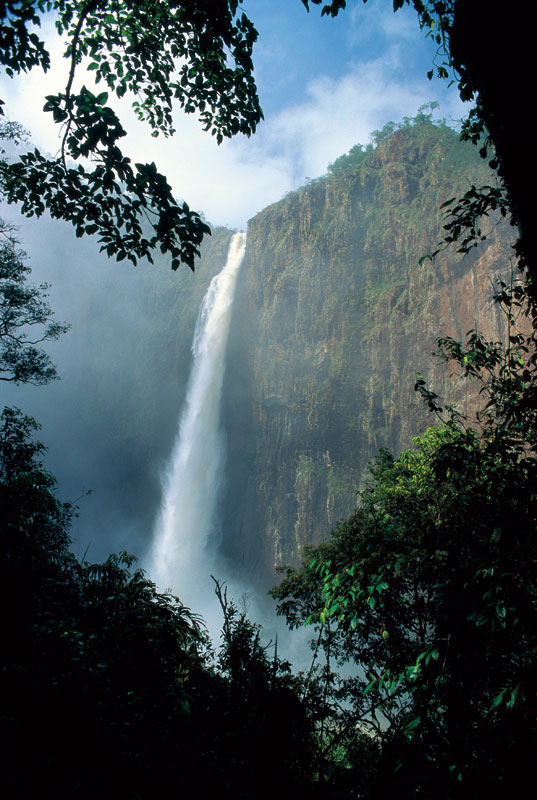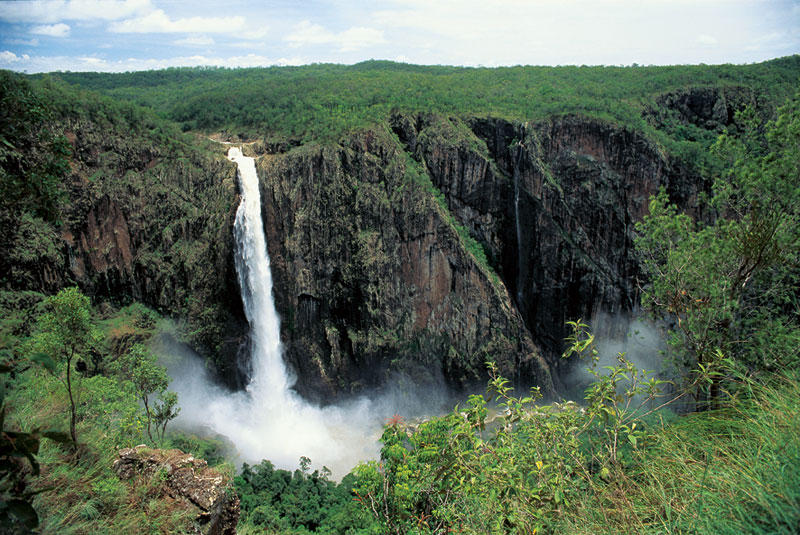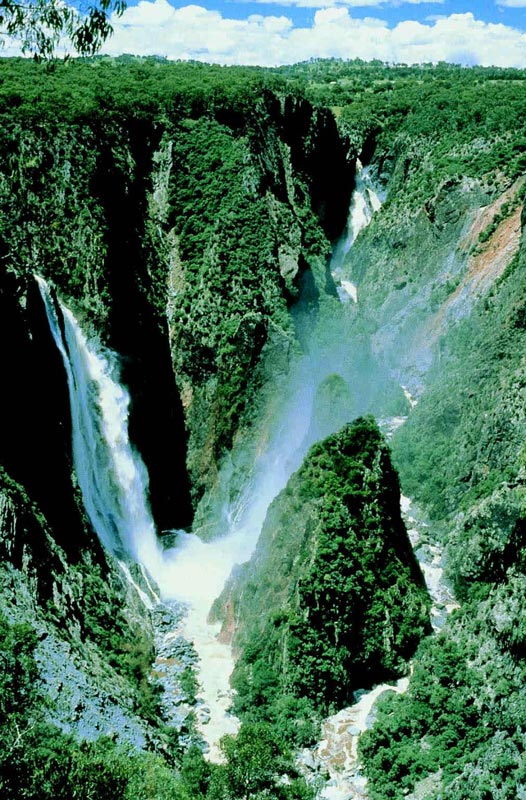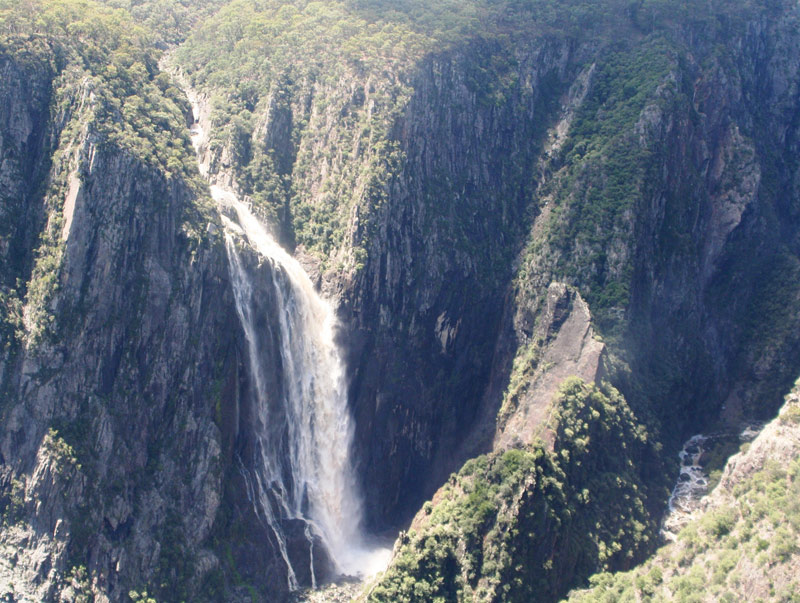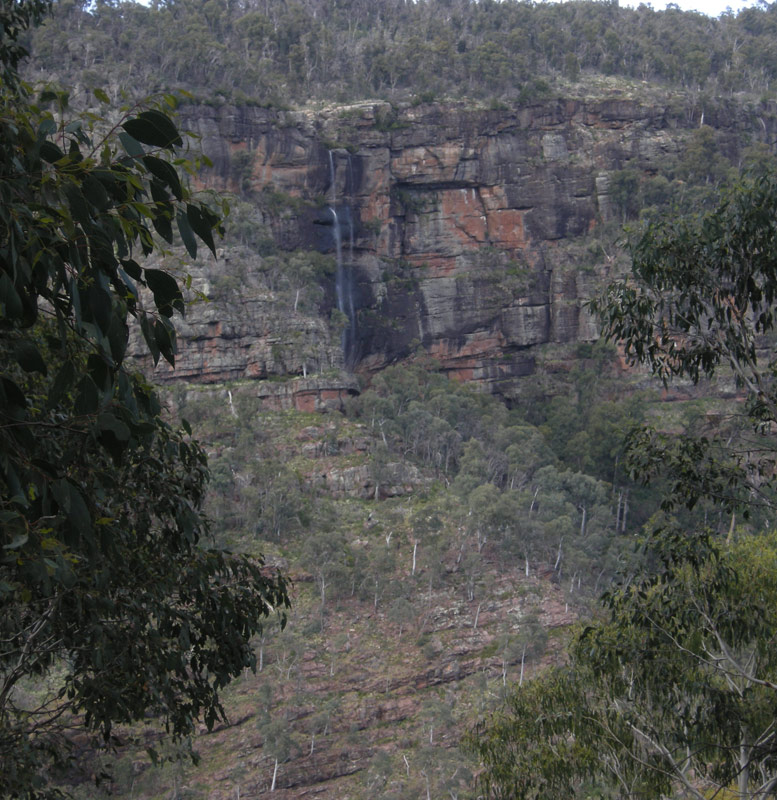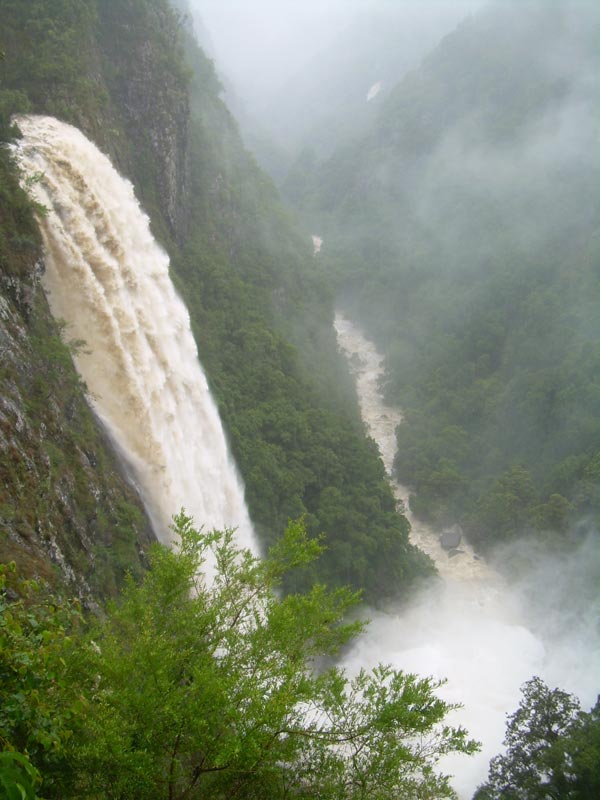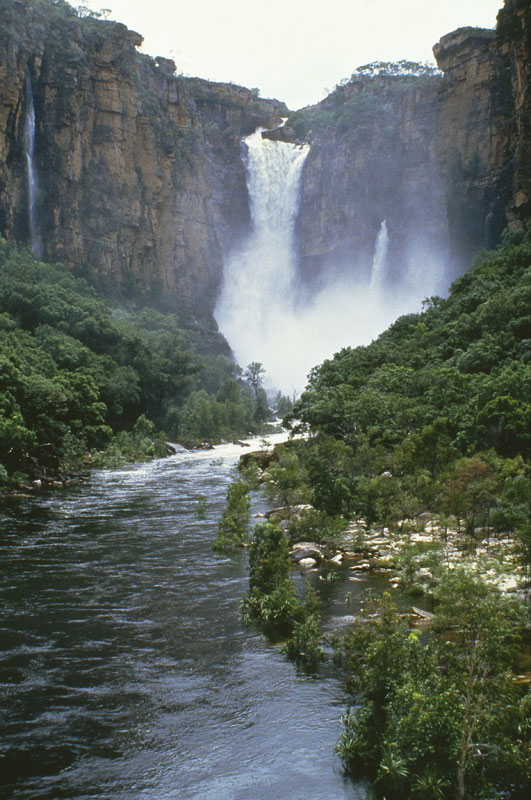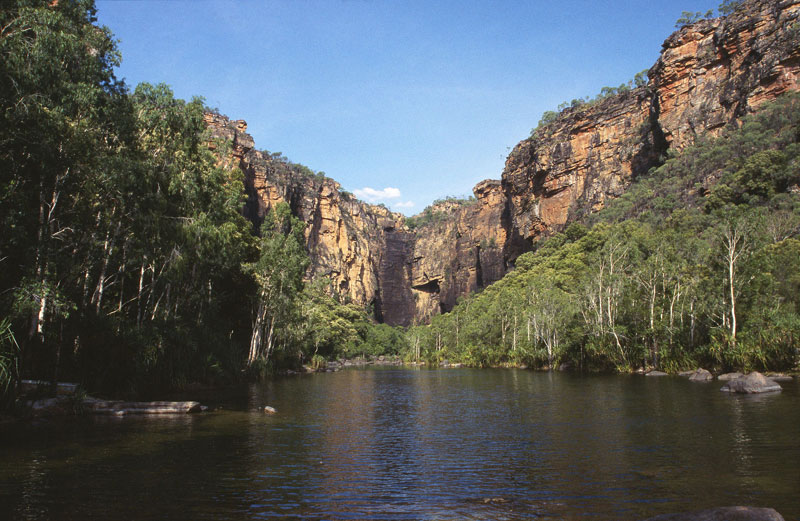Significant Waterfalls
Page last updated:27 June 2014
There are numerous significant waterfalls throughout Australia, but the most spectacular drops occur along the eastern seaboard. Although the catchment areas of these rivers are relatively small, their high-volume flows from wet mountain ranges have gouged deep gorges, resulting in many impressive cascades.
The large number of escarpments around Australia's coastline also has created a variety of falls which range from high so called horsetail features to cascades and wide, amphitheatre like drops. Because of the seasonal nature of rainfall in Australia many of the rivers and streams with waterfalls are ephemeral and flow only during times of high to extreme rainfall. This is the case particularly in the northern parts of Australia where tropical downpours during the cyclone season, or so called wet season from November to April turn dry riverbeds into raging torrents.
By world standards of waterfalls, Australia's features are relatively insignificant with Wollomombi Falls in New South Wales ranked at 135 according to the World Waterfall Database. However, there is some contention over which is Australia's highest waterfall, Wollomombi Falls or Wallaman Falls in Queensland.
The issue centres on debate over the inclusion of cascades in measurements. While the World Waterfall Database includes the upstream cascades leading to Wollomombi Falls, it believes that in the case of Wallaman Falls additional falls are to far downstream to be included. The database places Wallaman Falls at 294 in its world rankings.
Frequently quoted claims that Australia's waterfalls are the highest in the Southern Hemisphere also attract some criticism. According to the World Waterfall Database the contention ignores a long list in countries in South Africa and South America as well as New Zealand's Browne Falls, which the database puts at 836 metres, with a single drop of 420 metres and rates as the 10th highest in the world.
Wallaman Falls - Queensland
Located southwest of Ingham in the Girringun National Park of the UNESCO World Heritage Wet Tropics of Queensland, Wallaman Falls is a series of cascades on Stony Creek. The most significant feature is an abrupt plunge of 268 metres down a sheer cliff to create Australia's tallest single drop waterfall.
If the cascades over numerous ledges above and below the falls are taken as a continuos part of the falls its overall drop would measure 305 metres to make it Australia's highest waterfall. However, the question remains over whether the falls should include the associated cascades or be confined only to the 268 metre horsetail drop.
Wollomombi Waterfall - New South Wales
Located within the World Heritage listed Oxley Wild Rivers National Park east of Armidale on the edge of the New England Tablelands, Wollomombi Falls includes cascades and a horsetail drop of 260 metres. It is sometimes quoted as the tallest waterfall because, with the inclusion of the continuous upper cascade leading to the final drop as its highest point, it has a total fall of 424 metres.
The falls plunge into a deep gorge at the junction of the Wollomombi River and Chandler Creek, which also features the Chandler Falls just upstream from the confluence.
In the image at the left, Wollomombi Falls are closest to the camera and Chandler Falls can be seen further upstream on the right.
Dandongadale Falls - Victoria
Located on the edge of Mount Cobbler Plateau in Victoria's Alpine National Park near the town of Mansfield, Dandongadale Falls are the highest in Victoria at 255 metres. The water supplying the falls originates in Lake Cobbler from where it spills over successive cascades in a series of significant drops, culminating in the final drop over the escarpment.
Because Dandongadale Falls is fed by a relatively small catchment on the Cobbler Plateau, the flows over the falls vary greatly and are very seasonal, with strong flows during winter and the spring thaw in the alpine catchment area. However, the flows can be very low or almost non-existent during the summer and in drought periods as is illustrated in the accompanying photo taken during the recent prolonged drought. The darker staining caused by water on the rocks surrounding the falls shows that at its height, the volume of water can be extensive.
Ellenborough Falls - New South Wales
West of Taree and near the small town of Elands, Ellenborough Falls drops 160 metres off the Bulga Plateau on the eastern side of the Great Dividing Range.
The falls are fed by numerous creeks over an extensive catchment, including those in the 6528 hectare Biriwal Bulga National Park, which has elevations up to 700 metres and a mean annual rainfall of between 1300 to 1600 millimetres.
Because these falls are very seasonal and the creeks are largely ephemeral, the resulting flows create a spectacular cascade over the escarpment when the upstream tributaries are in spate as illustrated in the image at the left.
Jim Jim Falls - Northern Territory
Plunging over an escarpment in the World Heritage listed Kakadu National Park, Jim Jim Falls drops 200 metres into a large pool surrounded by 150 meter high cliffs. The falls are at their most spectacular during the wet season between November and April, but can be viewed only from a light plane or helicopter because roads in the area are mostly inaccessible at that time of year.
At other times the falls cease flowing altogether as illustrated by the image on the right, but the waterhole at the foot of the falls is sufficiently deep for it to remain a viable source for water throughout the year.
